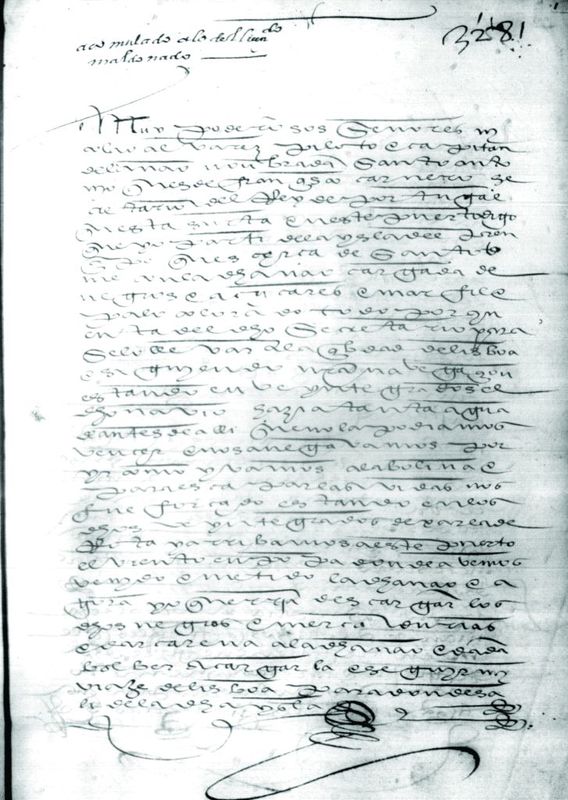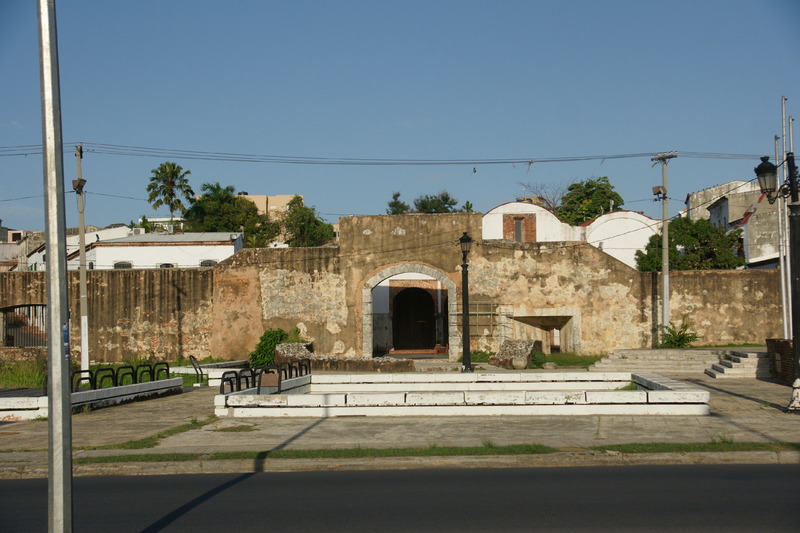A ship cargo of black slave seized by the authorities of Santo Domingo (1555)
TRANSCRIPTION
ENGLISH TRANSLATION
Added to licenciado Maldonado’s items
Very powerful gentlemen I, Nicolas Alvarez, pilot and captain of the vessel named Santo Antonio, which belongs to Francisco Carnero secretary of the King of Portugal [and] which is anchored in this port, say that I departed from Principe island, which is close to Sao Tome, with the ship loaded with Blacks and sugar and ivory and red wood, all on accounts of said Secretary to bring it to him to the city of Lisbon and following our sailing, being at twenty degrees the said vessel was taking in so much water since earlier that we could not overcome it and we were sinking since we were going, as we were, close to the wind, and to save our lives we were forced, while being at the twenty degrees to leave the route and we arrived at this port with the wind in our sails where we have arrived and brought in the said ship, and now I would like to unload the said Blacks and goods and repair the said ship and, once done, load it again and continue my trip of Lisbon where I sailed to from the said island
Commentary
Smuggling European manufactured goods and enslaved Africans into La Española became a frequent practice throughout the second half of the sixteenth century, justified by the local scarcity of metropolitan commodities needed by the settlers.
In 1555, a Portuguese vessel showed up in the port of Santo Domingo, alleging to have been diverted off its route from Cabo Verde to Portugal by serious damage to its hull that forced the crew to head for the nearest port to have fundamental repairs done that would, in turn, allow the ship to continue its voyage back to Portugal.
Santo Domingo’s colonial authorities did not buy the argument and seized the cargo of the ship, including several dozen enslaved male and female Africans of different ages who were then sold to the local residents
 Sixteenth-Century La Española: Glimpses of the First Blacks in the Early Colonial Americas
Sixteenth-Century La Española: Glimpses of the First Blacks in the Early Colonial Americas 
